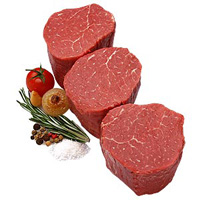If there was a machine that could detect whether your hamburger was really grass-fed like the label says it is, would you use it? Picarro – the company behind a piece of technology that’s capable of doing so – hopes you’d say yes. Because they think you’d be surprised to find out what’s really in your food.
Based in Silicon Valley, Picarro is a highly reputable company that specializes in carbon and water cycle measurements. They’ve developed an instrument that’s capable of detecting isotopes in food called an ‘optical stable isotope analyzer.’ And although it sounds complicated, the way it works is actually quite simple.
According to Picarro Business Director Iain Green – whom we contacted via email – carbon dioxide (CO2) and water (H2O) are the same molecules that plants photosynthesize to create the sugars, oils and other organic material. And since isotopic signatures vary around the world, so do crops. And depending on the plate type and region it’s grown, crops absorb different ratios of these molecules and therefore have unique isotopic signatures.
An example of this? Sugar cane grown in Hawaii has a different ‘signature’ than sugar grown from corn in the Midwest. And cocoa grown on the Ivory Coast has a different ‘signature’ than cocoa grown in Ghana. And Picarro can tell the difference after one little test.
The process is simple and affordable (costing about $1 per test). A tester takes a small quantity of the food and burns it at 1000 degrees Celsius, which acts like reverse photosynthesis turning all of the carbon and hydrogen in the organic material of that food, plant or other organic product (like a pesticide or a plastic) and turns it into CO2 and H20 – which they can then analyze.
And why is this useful? Well, if you pick up box of cereal at the grocery store and the label says it contains wheat when it really contains corn, Picarro would be able to tell you that.
This technology couldn’t come at a better time as it seems there’s been a growing trend among Americans beginning to question what’s really in their food – e.g., pink slime. Another recent instance of this was in the fish industry. Several fish companies in the Massachusetts area were caught labeling less desirable species of fish as more desirable species for increased profit without the consumer having a clue. So if a fish company in Massachusetts is capable of committing food fraud, who’s to say other companies aren’t doing it as well?
One way of sorting out the good from the bad is testing our products with Picarro’s technology. Green said their instruments are already being utilized by top 5 food companies like Coca Cola, which has been using their equipment to ensure their new ‘Plant Bottle’ is in fact made from 30% recycled materials like they claim. And Picarro has also spoken with several watchdog groups about monitoring the regionality of crops – which is a growing local and global issue.
So just how beneficial is this technology for consumers? Picarro says very.
“Much of the food ingredients being shipped around the world are untested, and a surprising amount are falsely labeled,” says Green. “In fact, we’ve bought products off the internet that are completely counterfeit. That’s not just an economic problem, it has massive implications on the health and safety of the public. If you don’t know where your food really comes from, how can you be sure that the supplier has kept out things like allergens, pesticides and other chemicals – that can and will kill someone.”
Green also went on to explain that labels on the food and products we buy are not foolproof, and that the contents of any container should to be tested. One example of this is when Picarro tested the contents of a common moisturizer and detected traces of shark in it – an ingredient listed nowhere on the label, and one that would have the average consumer and any animal rights activists up in arms.
The good news is many companies already have Hazard Analysis and Critical Control Point (HACCP) controls in place to test the ingredients they bring into their factories – some of which contain chemical testing already. But if a company wanted to begin testing their ingredients using Picarro’s isotope analyzer, Green said they would need to buy the equipment and run their own samples. And since the price varies around the world due to tax and other considerations, it’s a per sample cost of about $1, which includes everything they need to run the sample (except the the sample itself.)
Green said the break even point is a few thousand samples, which puts the cost of the analyzer also at a few thousand dollars. But if it’s for the safety of the products we use and the food we consume, it seems (very) worth it to us.
Also Read:
Government Plans to Improve Food Safety
In China, Food Safety Concerns Boost Organic Farming
Food Safety Bill Passes, Threatened by Error
